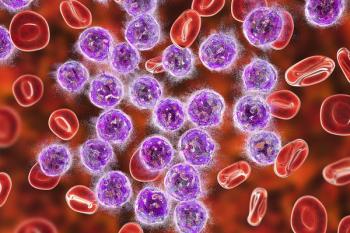
Black Women With Early HR+ Breast Cancer Have Shorter RFS and OS Vs White Women

Findings from a post-hoc analysis identified disparities in Black patients with early hormone receptor–positive breast cancer that could not be explained by early discontinuation of endocrine therapy, clinicopathologic characteristics, insurance coverage, or neighborhood deprivation index.
Compared with White patients, Black patients with early hormone receptor (HR)–positive breast cancer appear to have significantly worse survival, according to findings from a post-hoc analysis of the phase 3 TAILORx trial (NCT00310180) published in JAMA Oncology.1
Black vs White race was associated with a statistically significantly shorter relapse-free survival interval (HR, 1.39; 95% CI, 1.05-1.84; P = .02) and overall survival (OS; HR, 1.49; 95% CI, 1.10-2.99; P = .009) after adjusting for factors such as insurance and neighborhood deprivation index (NDI). Those with Medicare (HR, 1.30; 95% CI, 1.01-1.68; P = .04) and Medicaid (HR, 1.44; 95% CI, 1.01-2.05; P = .05) tended to have a worse OS vs those with private insurance, although uninsured status was not associated with clinical outcomes. Additionally, patients living in a neighborhood in the highest NDI quartile had the worse OS vs those in the lowest quartile (HR, 1.34; 95% CI, 1.01-1.77; P = .04).
“Prior studies have reported racial disparities in survival outcomes among Black women with [HR]–positive breast cancer. However, the degree to which this association between race and survival can be explained by social determinants of health, such as insurance coverage and neighborhood deprivation, has not been considered in most of these studies. Our retrospective analysis of women with breast cancer enrolled in the TAILORx trial noted that individual (ie, insurance) and structural (ie, neighborhood deprivation) social determinants of health independently correlated with [OS], but not with [RFS],” the investigators wrote.
TAILORx was a prospective National Cancer Institute–funded randomized trial that was designed to determine the efficacy of hormone therapy with or without chemotherapy in patients who had received surgery for node-negative disease. Specifically, the trial included patients with breast cancer that was HR positive, ERBB2 negative, and axillary node negative.2
In total, 10,253 patients were included in the study, 9719 of whom had follow-up information. In total, 4.2% of patients were Asian, 7.1% were Black, 84.3% were White, 9.1% were Hispanic or Latina, and 4.4% were an unknown race. Moreover, 11.9% of patients discontinued treatment with endocrine therapy within 4 years of starting treatment, and 1.8% did not receive endocrine therapy.
Investigators noted that although the power for racial comparisons within NDI subsets was limited, the interaction test assessing differences in Black and White patients across all NDI quartiles indicated that persistent racial disparities in OS and RFS were present. Several factors were significantly associated with an inferior RFS, including large tumor size (HR, 2.08; 95% CI, 1.75-2.48; P <.001), high histologic grade (HR, 2.11; 95% CI, 1.57-2.83; P <.001), and higher recurrence score and older age (HR, 0.46; 95% CI, 0.28-0.75; P = .002). Large tumor size (HR, 1.65; 95% CI, 1.37-1.98; P <.001), high histological grade (HR, 1.37; 95% CI, 1.02-1.82; P = .03), and high recurrence score and older age (HR, 3.31; 95% CI, 1.81-6.05; P <.001) were also associated with inferior OS.
References
- Sadigh G, Gray RB, Sparano JA, et al. Assessment of racial disparity in survival outcomes for early hormone receptor–positive breast cancer after adjusting for insurance status and neighborhood deprivation. JAMA Oncol. 2022;8(4):579-586. doi:10.1001/jamaoncol.2021.7656
- Sparano JA, Gray RJ, Makower DF, et al. Adjuvant chemotherapy guided by a 21-gene expression assay in breast cancer. N Engl J Med. 2018;379(2):111-121 doi:10.1056/NEJMoa1804710
Newsletter
Stay up to date on recent advances in the multidisciplinary approach to cancer.





















































































